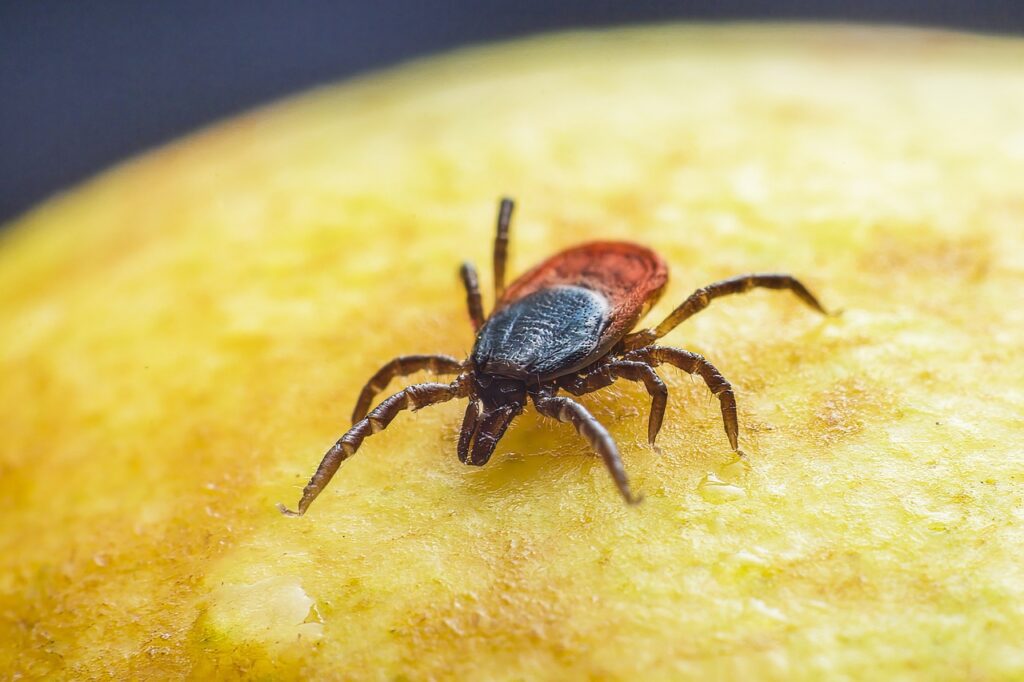Types of Ticks
Ticks are small, blood-feeding parasites and vectors of a number of diseases, and they are members of the arachnid family, which also includes spiders, scorpions, and mites. Globally, there are about 900 tick species, and they thrive in warm, humid climates. Ticks are known for their method of feeding; they attach themselves to the skin of mammals, birds, and sometimes reptiles and amphibians, and slowly suck their blood. It’s crucial to be aware of the different types of ticks and the specific diseases they carry, as this knowledge can help in preventing and treating tick-borne diseases. In this article, we’ll explore some of the most common types of ticks found around the world.
1. Blacklegged Tick (Ixodes scapularis)
Commonly known as the deer tick, the blacklegged tick is notorious for spreading Lyme disease, particularly in the northeastern, mid-Atlantic, and north-central United States. They can also transmit anaplasmosis, babesiosis, and Powassan disease. These ticks have a two-year life cycle and are most active during the warmer months.
2. Lone Star Tick (Amblyomma americanum)
Easily identified by the white dot or “lone star” on the female’s back, these ticks are primarily found in the southeastern and eastern United States. They are known carriers of ehrlichiosis, tularemia, and Southern Tick-Associated Rash Illness (STARI). Interestingly, bites from the Lone Star tick can also lead to Alpha-gal syndrome, a red meat allergy.
3. American Dog Tick (Dermacentor variabilis)
Found predominantly in areas with little or no tree cover, such as grassy fields, and along walkways and trails, the American Dog tick transmits Tularemia and Rocky Mountain spotted fever. This species is most active in the spring, summer, and fall.
4. Brown Dog Tick (Rhipicephalus sanguineus)
The Brown Dog tick is unique in that its preferred host is the domestic dog. It’s found worldwide and is more of a nuisance since it can infest homes and kennels. This tick can transmit canine ehrlichiosis and babesiosis.
5. Rocky Mountain Wood Tick (Dermacentor andersoni)
This tick is a primary vector for Rocky Mountain spotted fever, Colorado tick fever, and tularemia. It is typically found in the Rocky Mountain states and southwestern Canada. The life cycle of the Rocky Mountain wood tick can take up to three years to complete.
6. Western Blacklegged Tick (Ixodes pacificus)
Predominantly found along the Pacific coast of the U.S., the Western Blacklegged tick transmits the bacteria that cause Lyme disease and anaplasmosis. Their peak activity periods are late winter through early summer.
7. Soft Ticks (Family: Argasidae)
Unlike the hard ticks mentioned above, soft ticks do not have a hard shield and they are in the family Argasidae. These ticks can transmit diseases like tick-borne relapsing fever. They are usually found in the western United States and are known to live in rodent burrows, feeding on their hosts while they sleep. Examples of Soft Ticks include the
Pigeon Tick (Argas reflexus):
Primarily found in bird nests and buildings frequented by birds, this tick can bite humans but rarely transmits diseases.
Each of these tick species has unique characteristics, including appearance, habitat, behavior, and the pathogens they carry and transmit. The diseases caused by these pathogens can be serious or even life-threatening, making tick prevention and prompt removal crucial. It’s important to use insect repellent, wear appropriate clothing, and perform regular tick checks after spending time outdoors. If you find a tick attached to your skin, it’s essential to remove it promptly and correctly, ideally with fine-tipped tweezers, grasping the tick as close to the skin’s surface as possible and pulling upward with steady, even pressure.
Understanding the types of ticks and their behaviors not only helps in identifying them but also plays a significant role in the prevention and management of tick-borne diseases. As our environments and climates continue to change, the habitats and populations of ticks may also evolve, making ongoing research and awareness vital for public health. Read more about ticks.
Additional Resources
Centers for Disease Control and Prevention (CDC): https://www.cdc.gov/ticks/index.html
